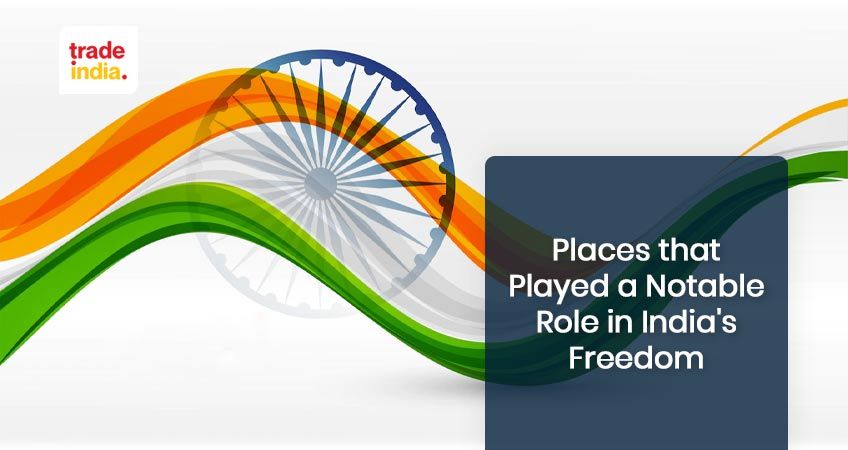
On Monday, August 15, 2022, India will celebrate 75 years since it gained its freedom from British domination. After 200 years of oppression by the British, India finally achieved freedom on August 15, 1947. On this date in 1947, Jawaharlal Nehru became India's first prime minister and raised the national flag atop Delhi's Red Fort.
Every single Indian state goes all out for this holiday. Nonetheless, for historical and cultural reasons, the national festival is observed in Delhi.
All government buildings and businesses in India will be closed on this day to observe a national holiday. All Indian states and Union Territories celebrate Independence Day with flag-raising ceremonies, parades, and cultural activities.
If you haven't already, you should take the time to see the sites in India that tell the stories of our freedom warriors' battles.
1. Kolkata, West Bengal
Throughout India's fight for independence, West Bengal's Kolkata (formerly named Calcutta) served as the movement's epicenter.
In 1905, Mahatma Gandhi launched the Swadeshi Movement to reduce India's reliance on imported products in favor of domestically produced ones. The Indian National Association was created there by Anandamohan Bose and Surendranath Banerjee.
Indian political leaders continued to meet in Calcutta to plan their next steps toward liberation from the British Raj. Because of rising jingoism in Calcutta, the British relocated the Indian capital to Delhi in 1911 out of fear of a revolution.
● Anushilan Samiti:
It was founded in 1902 in Bengal as a result of the coming together of many local youth organizations and gyms (akhara).
● Jugantar:
There were two major underground revolutionary movements in Bengal fighting for Indian independence; one was called Jugantar, and the other was called Yugantar.
● Subhas Chandra Bose:
Subhas Bose, who is also known as, “Netaji”, left a mark in the hearts of the Indians for his patriotism in India. He founded Azad Hind Fauz and was a very strong person who participated in India’s freedom struggle.
2. Amritsar, Punjab
The Jallianwallah Bagh Massacre on April 13, 1919, is one of the events that continue to inflame all Indians.
British Army Commander Reginald Dyer was responsible for the bloodiest massacre in history when he gave the order for his soldiers to open fire on a multitude of unarmed protesters and Baisakhi pilgrims gathered at the Jallianwala ground.
More than a thousand men, women, and children were killed when British troops under the command of Brigadier-General Reginald Dyer opened fire on a peaceful protest rally taking place in a walled courtyard in Amritsar.
Wagah Border is 32 kilometers away from Amritsar, Punjab, and was a crossing point for refugees and migrants during the 1947 independence war. The Border Security Force (BSF) of India and the Pakistani Rangers perform a joint ceremony known as the Beating Retreat Ceremony.
3. Jhansi, Uttar Pradesh
Rani Laxmi Bai, a renowned woman known as “Jhansi Ki Rani” who altered the course of Indian history, fought heroically against the British in her hometown of Jhansi in the great Indian Rebellion of 1857. True to her rebellious spirit, Laxmi Bai's patriotism made significant strides in the struggle for independence. Because of her unwavering devotion to her nation, she fought to the very end. She proved herself worthy of the name Jhansi Ki Rani by fighting like a man.
There is no better spot to spend the evening before Independence Day than in the historic Jhansi Fort, located in Jhansi, Uttar Pradesh.
4. Delhi
Tees January Road (formerly Albuquerque Road) in Delhi, India is home to Gandhi Smriti, a museum honoring Mahatma Gandhi that was once known as Birla House or Birla Bhavan.
The Jama Masjid, or "Friday Mosque" in Arabic, is the largest mosque in Delhi and the traditional site of Friday prayers for the city's Muslim population.
Mahatma Gandhi was honored at a memorial in Delhi called Raj Ghat. It was once the name of a ghat in Old Delhi's ancient district (Shahjahanabad).
In terms of historical landmarks recounting India's fight for independence, the Red Fort stands out as the most important. This Mughal fort was instrumental in India's fight for independence from the British and remains an important landmark.
Jawaharlal Nehru, India's first Prime Minister, gave a speech and raised the country's flag here on August 15, 1947. This custom is still practiced, and it's wonderful to take part in.
5. Mumbai, Maharashtra
A major landmark in India's war for independence, August Kranti Maidan was formerly known as Gowalia Tank Maidan. At this spot in Mumbai, Mahatma Gandhi launched his campaign to end British domination of India.
One of the most recognized structures in the world, the Gateway of India is a source of great pride for the city of Mumbai. These three colors are the flag of India, and they are displayed on two special days: Independence Day and Republic Day.
The building known as Mani Bhavan in Mumbai has a rich history since it was the primary residence of Gandhiji as he rose from the ranks of agitator to the global icon by pioneering the use of Satyagraha (both individual and mass) as a new and potent weapon against evil and injustice.
6. Ahmedabad, Gujrat
There are other names for this location, including Gandhi Ashram, Harijan Ashram, and Satyagraha Ashram. Sabarmati Ashram was built on the banks of the Sabarmati River in the Sabarmati neighborhood of Ahmadabad, Gujarat. This building was once home to Mahatma Gandhi. On March 12, 1930, he launched the now-famous Dandi March from Sabarmati Ashram.
Chandra Shekhar Azad Park and Barrackpore are two examples of such locations. We should all cherish our independence and do everything we can to make India a better place for everyone to call home.
7. Port Blair, Andaman and Nicobar Islands
As a result of everything that the Andamans Cellular Jail or Kala Paani represented, just the mention of the words "Kala paani" can still send shivers down our spines.
The island has been used by the British as a prison since 1857, but the current jail wasn't built until between 1896 and 1906. It was designed after Jeremy Bentham's Panopticon, a prison that had a central watchtower so that all convicts could be seen at once. After serving as a prison for numerous political prisoners and freedom fighters, including Vinayak Damodar Savarkar, Andaman and Nicobar is now a symbol of independence.
8. Bangalore, Karnataka
When the British colonized India in 1866, they constructed Central Jail, which later became Freedom Park in Bangalore. In addition to the museum, art gallery, and other attractions, Freedom Park also features a state-of-the-art information corridor.
In 1927, when visiting Bangalore, Mahatma Gandhi stayed at the Kumara Park guest house for roughly three months.
On July 13, 1951, Jawaharlal Nehru, the Prime Minister of India at the time, lay the foundation stone for the Vidhan Soudha.
Founded in 1917 by Annie Besant, the National High School Bangalore fort in Basavanagudi is one of the oldest schools in Bangalore and is widely thought to have been built as a result of the liberation movement.
9. Chennai, Tamil Nadu
As the former winter capital of Madras Presidency, Chennai has been home to many important figures and movements in India's fight for independence.
Tilak Ghat on Marina Beach used to be British India's version of a public square, where people could congregate to hear lectures from independence struggle luminaries. All of the major liberation fighters, from Mahatma Gandhi and Bal Gangadhar Tilak to Annie Besant and Subash Chandra Bose, had public assemblies on this shore.
Here, a century ago, stood "Tilak Bhavan," where Gandhi stayed for many days. The 18th of March, 1919—around the time of the passage of the Rowlatt Bills—stands out in Gandhi's memory as the most pivotal of these days. Gandhi stayed up all night considering his options for combat.
After years of struggle, Gandhi's vision of a nonviolent, noncooperative movement finally paid off and paved the path for India's independence.
10. Meerut, Uttar Pradesh
A mutiny accusation was brought against 85 sepoys of the 3rd Bengal Light Cavalry on 10 May 1857. They were then shackled and taken on a procession through the streets of Meerut.
In Victoria Park, Meerut, 85 troops were court-martialed and incarcerated on May 9, 1857, after refusing to use greased cartridges. This demeaning treatment of the armed forces ultimately sparked a revolution.
Simultaneously, the 11th and 20th Indian Infantry converged on the Parade Ground (now the Race Course) and launched an assault on the English troops and officers.
Soldiers from the 11th and 20th Infantries exchanged gunfire near the course's main entrance, with the initial shot being fired by a member of the latter unit at CO Colonel George Finish.
While this was happening, 85 Third Cavalry troops who had been sentenced to prison by court-martial rode their horses to the Victoria Park prison to be released. By nightfall, the revolution had spread throughout the city, with participants meeting in Rithani, a village close to Partapur, before setting off on a march toward Delhi.
This uprising against the British began in Meerut and quickly spread across the country. The 1857 Revolution stories and acts of valor of Indian revolutionaries who gave their lives are presented here in chronological order.
Conclusion
Let us take this day to reflect on the sacrifices that were made by our country's heroes to win independence from British tyranny. Keep in mind that since they did, we can do it. We can say that all the cities and places in India have contributed significantly to getting India's independence.


